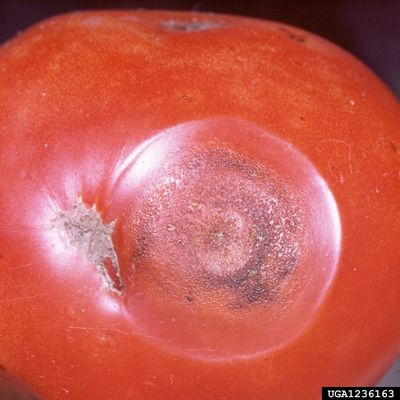Tomato Anthracnose Information
Anthracnose is a disease that can be brought about by a number of different fungi in the genus Colletotrichum. The fungus can infect both green and ripe fruit, though symptoms don’t appear until the fruit begins to ripen. Tomato anthracnose symptoms appear as sunken, watery spots on ripe fruits. As the spots grow, they sink into the fruit and darken in color. Sometimes spores appear as pink masses in the center of the lesions. As these lesions spread, they often join together and result in large rotten sections of fruit. This can occur when the fruits are still on the vine, or even after they have been harvested.
How to Control Tomato Anthracnose
Controlling tomato anthracnose comes mostly down to prevention. The fungal spores can survive the winter both in seeds and in diseased fruit. Because of this, it’s important not to save seeds from diseased fruit or to leave it in the garden at the end of the season. The spores spread more rapidly in moist environments, so keeping the fruit dry as much as possible is a good preventative practice. It can also enter damaged fruit much more easily, so every effort should be taken to keep from injuring the tomatoes. There are several anti-anthracnose fungicides available. These should be applied as soon as fruit is set, in order to keep the fungus from taking hold. Immediately remove and dispose of infected fruit to keep the spores from spreading. Note: Any recommendations pertaining to the use of chemicals are for informational purposes only. Chemical control should only be used as a last resort, as organic approaches are safer and more environmentally friendly.
